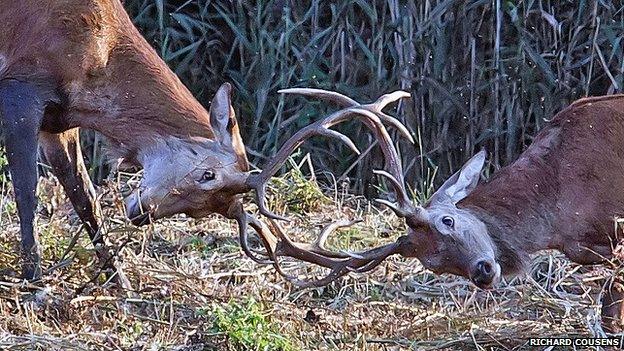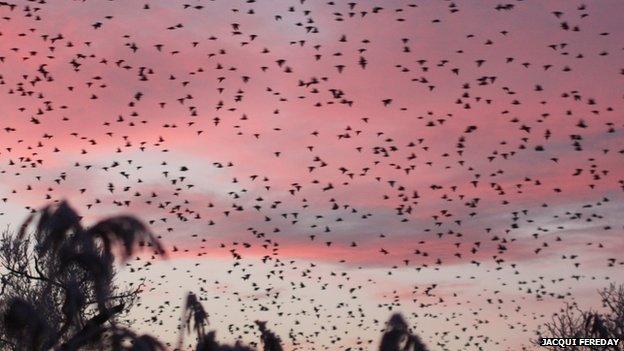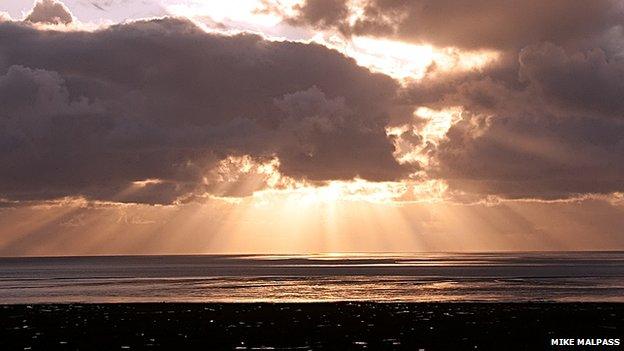Autumnwatch: Seasonal sights at RSPB Leighton Moss
- Published
.jpg)
Starlings fly in hedgehog-like formation over the reserve in Silverdale
The BBC's Autumnwatch returns to RSPB Leighton Moss nature reserve on the Lancashire coast this week.
Around 2.5m viewers watched last year's series, which showcased wildlife at the site, the largest reed bed in the North West.

Autumn is a good time to spot a wide range of species at the Silverdale reserve, near Morecambe Bay.

Male stags clash in their breeding season, known as the rut, at this time of year. A female hind is only fertile for a few days each year so competition for a mate is fierce.
Deers' behaviour can change during the rut and it is recommended that people and dogs don't go near the testosterone-fuelled stags, who can be aggressive.
Dawn and dusk are the best times to see these majestic creatures - the largest residents at Leighton Moss - lock horns.
.jpg)
Another autumn highlight is the dance of starlings at sunset. New camera technology will provide insights into why the birds flock in this mesmerising way, known as mumurations.

Annabel Rushton from RSPB Leighton Moss says: "Starlings are present in Britain all year round.
"However, during the autumn, we get migrant starlings over from Europe which causes a swell in numbers and leads to the murmurations at this time of year in particular."
.jpg)
Leighton Moss is also one of the best places in the UK to see bearded tits. However the birds' name is considered misleading because they sport more of a Hulk Hogan moustache than a beard.
Their call has also been compared to a musical sneeze.
Decline in reed beds
The species' population has declined due to a loss of reed bed habitats worldwide.
Ms Rushton says conservation efforts to create and protect reed beds means "bearded tits are doing much better in the UK".
But after a mild winter and relatively decent summer, she says 25 adult pairs and 61 young - "a healthy population" - are nesting at the reserve.
.jpg)
Otters are also at Leighton Moss all year round, playing in the water and catching eels.
.jpg)
"They can be seen best in the early mornings and at dusk. During summer and autumn, the mother has her young out with her in the day making them easier to spot," says Ms Rushton.

On the edge of Morecambe Bay, where mudflats and salt marsh provide food for several birds, RSPB Leighton Moss is ideal for many species.
"Morecambe Bay is the size of Manchester and is a canteen for 250,000 birds each year, feeding on the rich variety of creatures that live in the mud," says Ms Rushton.
Autumnwatch starts on BBC Two on Tuesday 28th October at 20:00 GMT